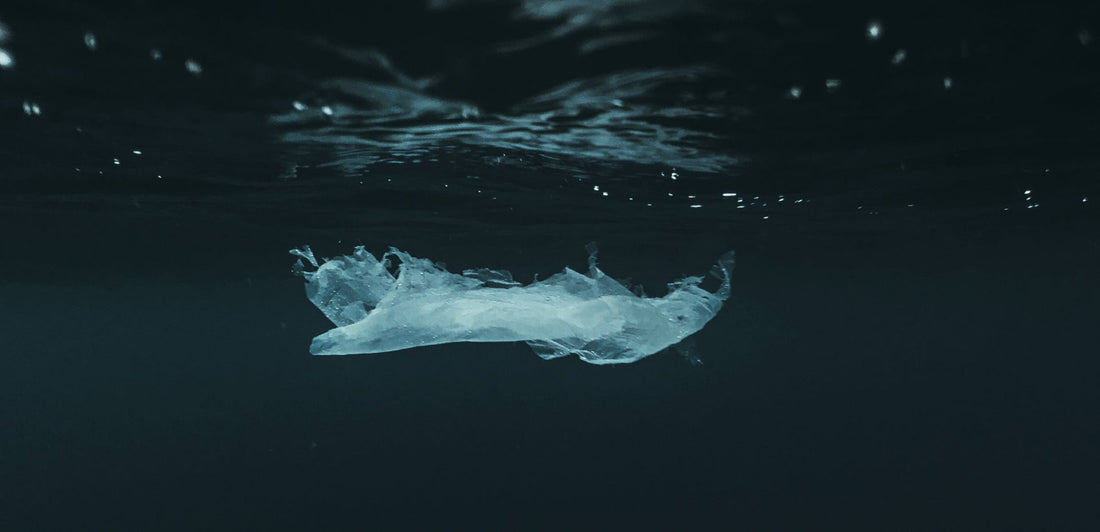Let’s say it’s baking hot outside, you’re by the beach and you’re ready to get in the sea. But once you dive in, you can’t help noticing a small object drifting in the water. A piece of plastic. It’s just one, you think, and carry on swimming. But then a bottle cap floats right past you, then a plastic bag, then another and another and soon the plastic is all around you.
That’s your swim ruined.
Plastic pollution is on every ocean lover’s radar. This summer (and the next, and the next…) you’re inevitably going to find some plastic in the ocean. The question you’ll probably ask yourself is, just how did that get there? This article has all the answers, as well as one key solution.
How does plastic end up in the ocean?
There are four primary sources of plastic in the ocean.
Landfill
This seems counterintuitive. If it’s going into the ground how does it get in the water?! Plastic is generally lightweight so can blow away in transit or even at the waste disposal site itself. From there it gets into rivers which flow to… the ocean.
We can stop this from happening by recycling properly.
Litter
We’re taught to “leave nothing behind”, and with good reason. Street litter is carried by rainwater into rivers and drains which again lead to the sea. That’s just one source of marine litter like plastic bags and other single-use plastics (products you use once and then throw away).
Plastic is also illegally dumped into the ocean. More on that horror story, later.
Cosmetics
Anything that goes down the drain has a chance of ending up in the sea. Even more so with microbeads, which are tiny pieces of plastic often found in cosmetics. They’re now banned in certain products in the UK (wohoo!) but that doesn’t mean you shouldn’t still watch out for them.
Other cosmetic materials like cotton buds and wet wipes when flushed also contribute to ocean pollution.
Fishing gear
In 2018, 27% of plastic in the ocean was fishing gear. This translates to larger sources of plastic pollution like nets and lines, which pose a “deadly threat” to marine life - from turtles to dolphins to sharks - and make up a large portion of the great pacific garbage patch.
Who dumps plastic into the ocean?
It’s illegal to dump plastic at sea. However, that doesn’t seem to bother some vessels. A 2019 study found that many of the plastic bottles washed up on Southern Atlantic shores came from ships.
While it’s frequently claimed that 5 nations (China, Indonesia, Thailand, Vietnam and the Philippines) are the biggest culprits of plastic dumping, this obscures the habits of western states, who are known to ship their plastic waste - and the blame - away from their own beaches and into the hands of countries who have limited means to keep it from going into the sea.
In a starker sense, if we don’t dispose of plastic in the correct way, we’re all “dumping plastic into the ocean” - since that’s where it invariably ends up!
Just how big is the plastic problem?
Jellyfish or plastic bag? These days it’s getting painfully difficult to tell the difference, with the quantity of plastic entering the ocean totalling 8 million tonnes a year (a very rough estimate). The plastic problem particularly affects locations subject to multiple ocean currents like Hawaii’s Kamilo Beach, where the sea is practically indistinguishable from plastic. Scary stuff.
As TIME magazine has summed up: “the world is in the midst of a plastic waste crisis.”
They point out that the plastic problem is as small as it is big, with plastics “breaking down into microscopic fragments, entering our bodies, with unknown health repercussions.”
The Solution to Pollution
In broad terms, turning the tide on plastic pollution has to start with two things: 1. producing less plastic and 2. recycling more of it. Currently only a small percentage of waste plastic is recycled, while the amount of plastic we use is rising and rising. It is actually set to triple by 2060…
Key approaches include:
- Banning more single-use plastics
- Improving waste management
- Pressuring companies to recycle rather than produce plastic
- Buying recycled products ahead of new ones
Is clothing made from recycled plastic safe?
Yes. Many of us are already wearing plastic everyday in the form of polyester. The only difference here is a positive one: recycled polyester (and plastic) avoids the refinement of fossil fuels, saves water, and stops pollution. If European parliament statistics are to be believed, recycling just one plastic bottle = taking 1 car off the road for a year!
Some innovative fashion materials are specifically designed to address ocean pollution. For example ECONYL® regenerated polyamide contains a portion of rescued fishing nets (the rest derives from other nylon sources like industrial waste) while 10% of SEAQUAL® recycled yarn comes from marine plastics collected by beach clean up groups and NGOs. These two fibres form the bulk of our sustainable swimwear range.
As a brand, we can only attest to the safety of our own products which are created through close partnerships with suppliers we know and trust.








